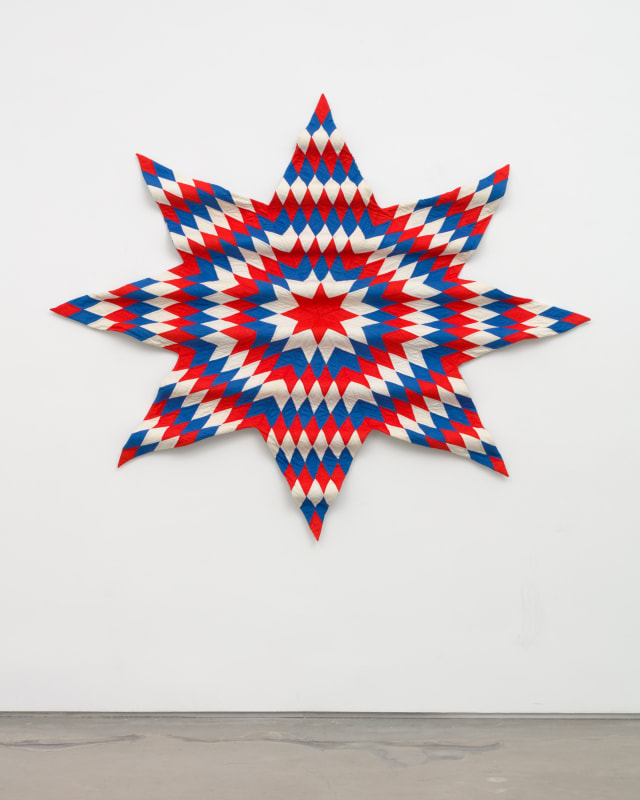BY: JAN GARDEN CASTRO
Sanford Biggers’ solo show Meet Me on the Equinox at Marianne Boesky transforms the gallery space into a pilgrimage that reframes and aims to correct world history. Instead of staging fake and real wars (as in Barbie and Oppenheimer), Biggers tackles complex cultural issues by inventing art puzzles with real life correspondences. For example, his marble Nesting Venus is a rescaled hybrid of the tiny 25,000-year-old stone Venus of Willendorf —a portly fertility goddess known for her large boobs, butt, and belly, with the slim, tall Venus de Milo tucked inside. I.e., this and the ancient Venus celebrate women of all sizes; big was beautiful until Western cultures idealized the female form. Biggers uses real quilts and marble—two of the world’s oldest art materials—in new ways. His art somehow tells stories that refer to past, present, and future all at once.
Jan Castro (JC): What does the exhibition title Meet Me on the Equinox mean?
Sanford Biggers (SB): This is a song and a phrase that my band Moon Medicin’ uses as a mantra—a thematic idea.
JC: Meaning meet me in the middle? A crossroads?
SB: A crossroads—the nexus point between the known and the unknown, the visible and invisible future, or past.
JC: The marble pieces have a nexus between African and Greek/Roman classical art.
SB: Yes, and some work has specific Thai and Japanese references. The low cedar bases or plinths reference roadside shrines and altars that you see throughout parts of Asia, Africa, South America, and, actually, everywhere—impromptu shrines where people leave offerings.
JC: Also, gender--I noticed that The Soothsayer has a male face with a female inside.
SB: In a sense, gender is irrelevant in the work. The equinox and the chimera references allow all to co-mingle.
JC: Why is the head in The Repatriot upside down?
SB: I was thinking of the relationship of the repatriation of objects from institutions and museums to their original home. I thought about this as an archeological object that was unearthed in a dig someplace. Inverted, it becomes an object. Another thing to note is that all of the (marble) masks are combinations of multiple masks, and one is a combination of three or four different masks.
JC: What cultures does the Knuck mask combine?
SB: A Fang mask for sure. Some Chokwe. Maybe Senufo. (The title Knuk refers to knuckles.) It’s polychromatic marble. We see a lot of the marbles in antiquity reproduced as monochromatic (alabaster white) sculptures, but in reality, many of them have pigments that have worn off and adornments—beads, raffia, and so on—that were taken off in photographs. So what we learn about is not the same as reality.
JC: I see a range of hues in the marbles you use. Was Pan, your star-shaped quilt an original shape?
SB: No. It was from a quilt with a star in the center; I basically excised the star from it. The other piece in the room, Poly, was the remainder of the square.
Mid-career, Biggers’ honors, solo museum shows, and Instagram followers are legendary and began with Blossom (2007), his Brooklyn Museum-based player piano/tree mashup installation/sculpture that plays Strange Fruit. The David Castillo Gallery is showing his work at the Armory this year. Next week, a second solo show, Back to the Stars, opens at the Monique Meloche Gallery, Chicago. An upcoming work is at Massimo De Carlo in Milan, Italy.


